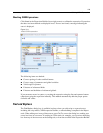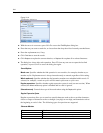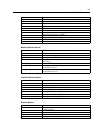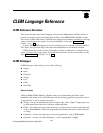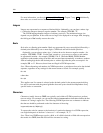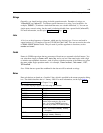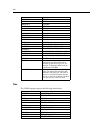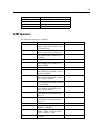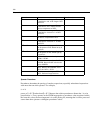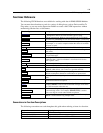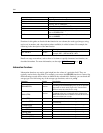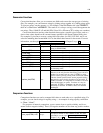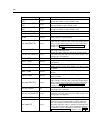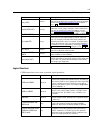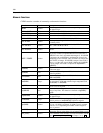
131
CLEM Language Reference
Format Examples
MM.SS
55.58, 01.00
(H)H.(M)M.(S
)S
12.1.12, 1.1.1, 22.12.12
(H)H.(M)M
12.23, 7.45, 22.7
(M)M.(S)S
55.58, 1.0
CLEM Operators
The following operators are available.
Operation Comments Precedence (see next section)
or
Used between two CLEM expressions .
Returns a value of true if either is tr ue
or if both are true.
10
and
Used between two CLEM expressions .
Returns a value of true if both are true.
9
=
Used between any two comparable
items. Returns true if ITEM1 is equal
to ITEM2.
7
==
Identical to =.
7
/=
Used between any two comparable
items. Returns true if ITEM1 is not
equal to ITE M2.
7
/== Identical to /=.
7
>
Used between any two comparable
items. R et urns true if ITEM1 is strictly
greater than ITEM2.
6
>=
Used between any two comparable
items. R et urns true if ITEM1 is greater
than or eq ual to ITEM2.
6
<
Used between any two comparable
items. R et urns true if ITEM1 is strictly
less than ITEM2
6
<=
Used between any two comparable
items. Returns true if ITEM1 is less
than or eq ual to ITEM2.
6
&&=_0
Used between two integers. Equivalent
to the Boolean expression INT1 &&
INT2 = 0.
6
&&/=_0
Used between two integers. Equivalent
to the Boolean expression INT1 &&
INT2 /= 0.
6
+
Adds two numbers: NUM1 + NUM2.
5
><
Concatenates two strings; for example,
STRING1 >< STRING2.
5
-
Subtracts one number from another:
NUM1 - NUM2. Can also be used in
front of a number: - NUM.
5
*
Used to multiply two numbers: NU M1
* NUM2.
4



